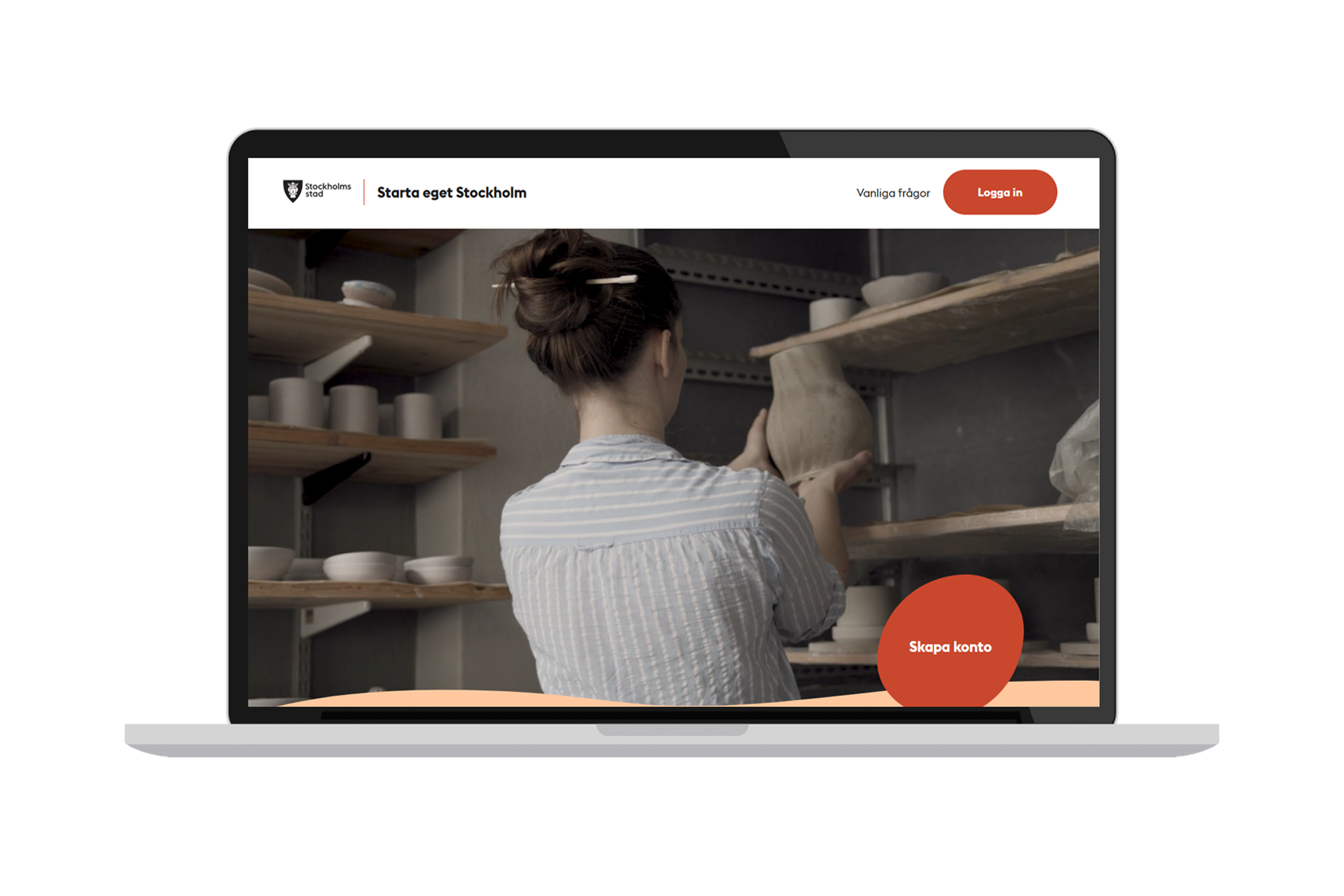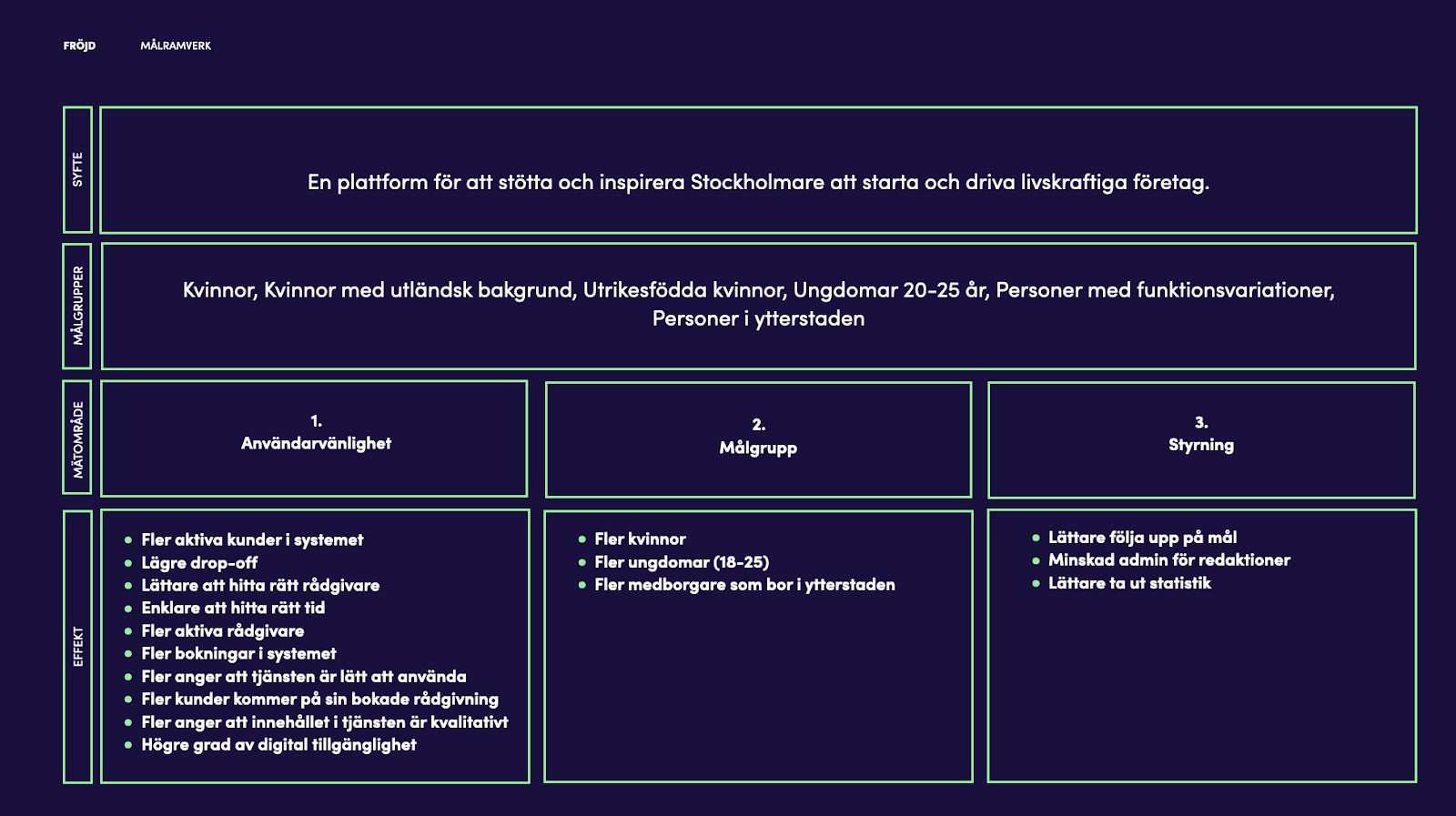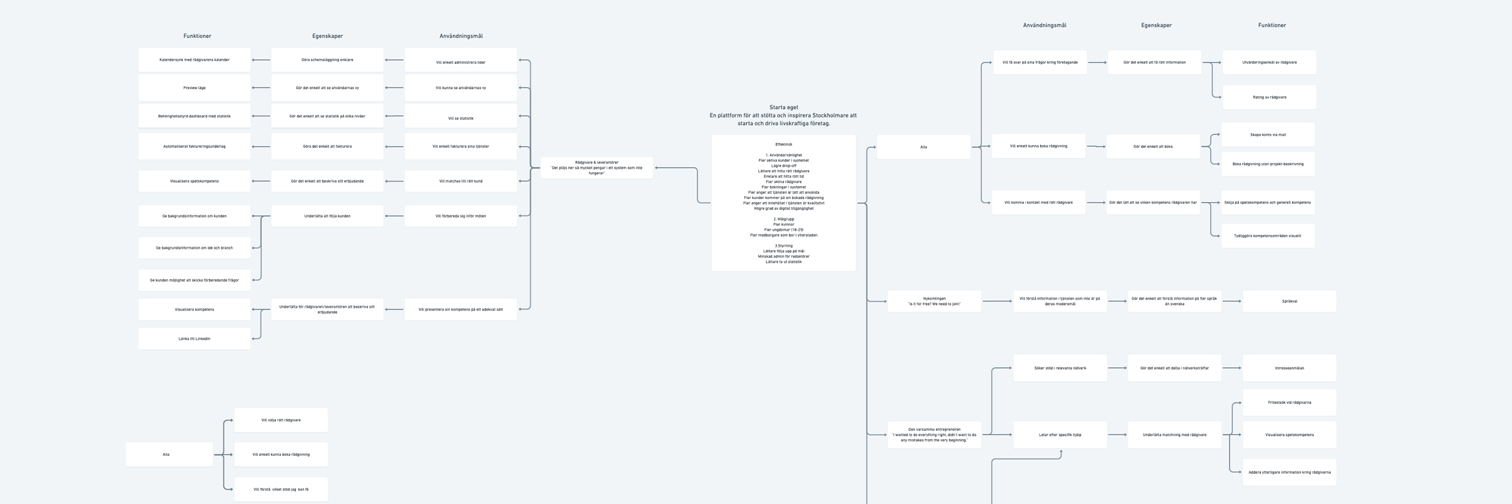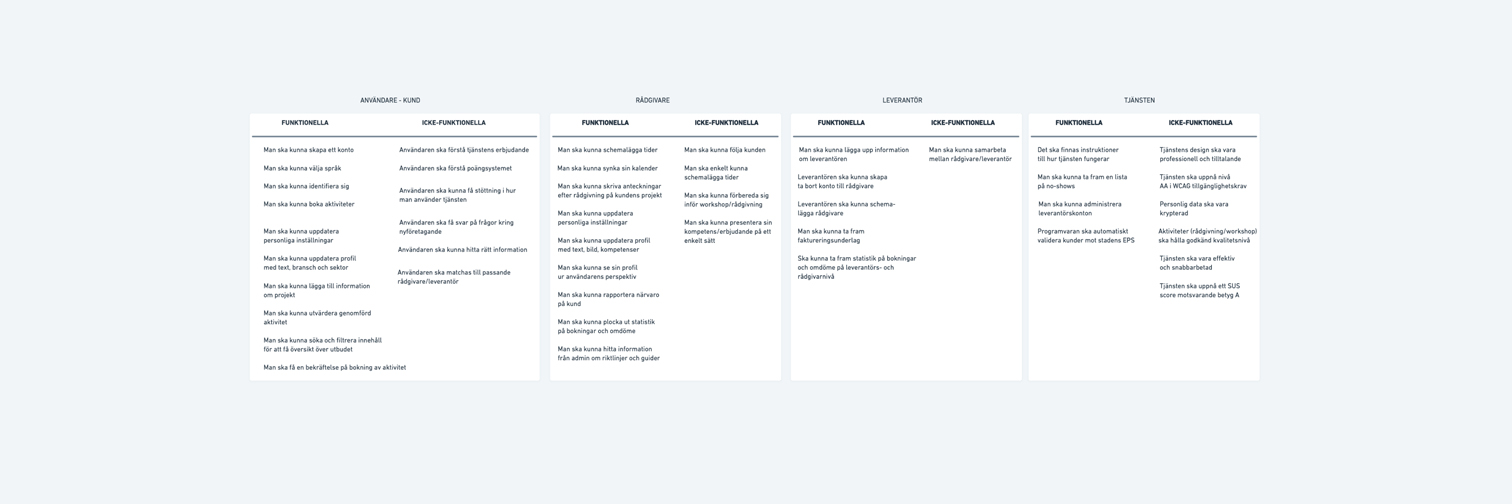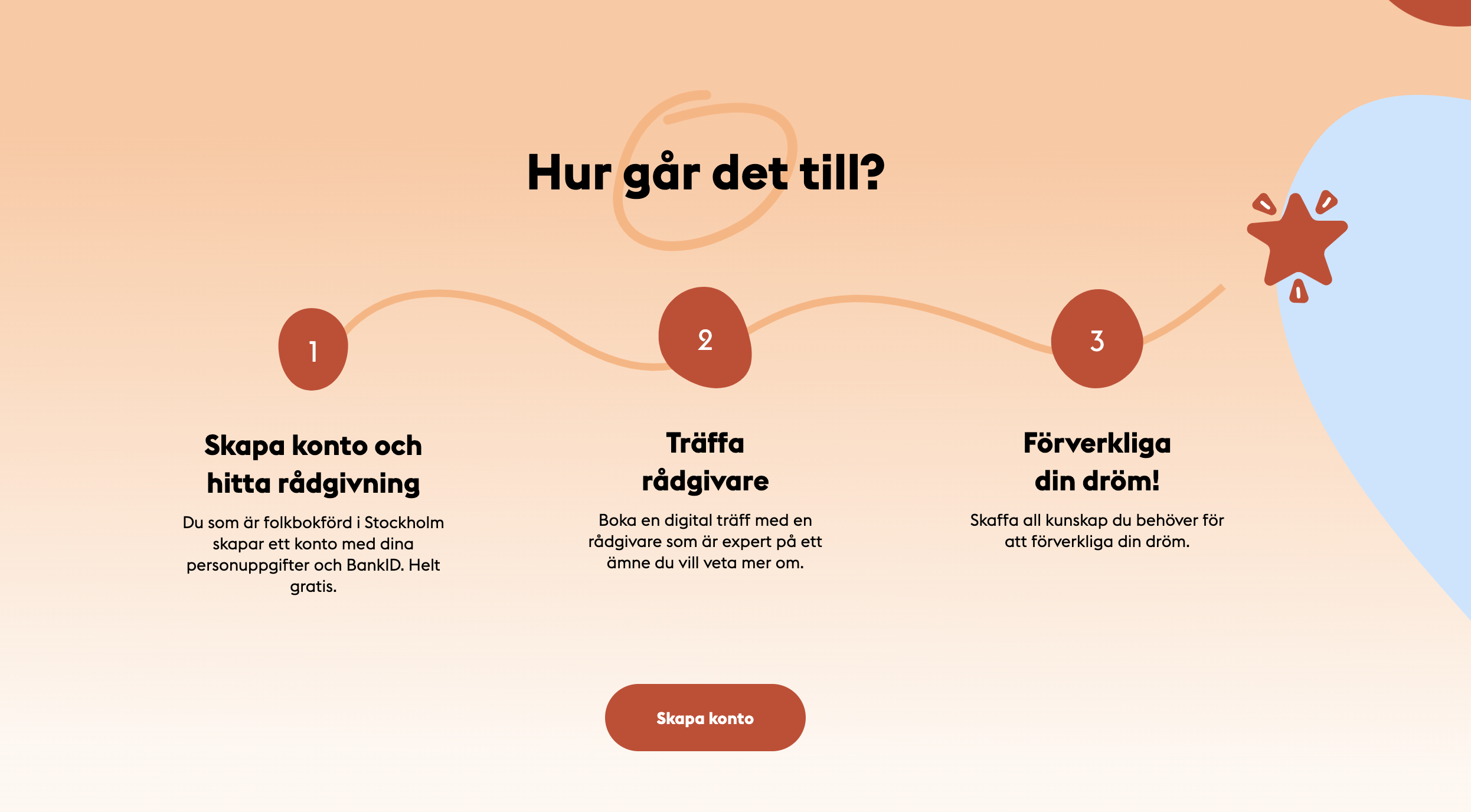Background
More than half of all Stockholmers dream about starting a new business. Through the online platform Starta eget - over 50 experts and advisors from various industries are ready to help, inspire and guide people through their business start up. Starta eget launched in 2021, but initial usability challenges surfaced.
With the goal of enhancing platform usability, we conducted comprehensive user research. As a result, we introduced a new MVP by Q4 2022. The re-platforming resulted in the creation of a more intuitive and user-friendly interface, simplifying access to information and resolved previous usability issues.
Visit Starta Eget
